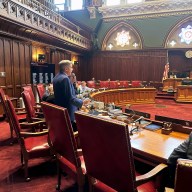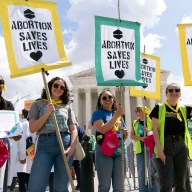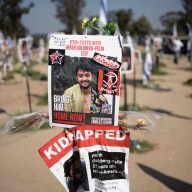When Aboriginal Canadians gather next month to elect a new leader of the Congress of Aboriginal Peoples, an organization founded to represent off-reserve Aboriginal Peoples, they will not be just be answering the question of who leads the congress, but perhaps who actually represents Aboriginal Peoples in Canada.
During the CAP’s 38-year history it has battled for that right with the better known — and richer — Assembly of First Nations (the AFN received $27 million in grants from the federal government alone in 2008, compared to $5.5 million for CAP), which says it represents all First Nations, though its leadership is elected only by First Nations band chiefs, whose governments receive $10 billion in funding from Indian Affairs — a source of tension for First Nations people living off reserve who can’t access those funds or that level of support.
According to Department of Indian and Northern Affairs Canada population projections, in 2009, there are 482,600 on-reserve Status Indians and 350,000 off reserve, though Statistics Canada says only 40 percent of First Nations people live on reserves.
So at stake in these elections is this: will a new CAP leader work with the newly elected AFN National Chief, Shawn Atleo, on behalf of all aboriginals, rather than against each other as their two predecessors did. How bad was it?
The AFN’s former national chief Phil Fontaine declared in 2007 about CAP: “It is deeply insulting when the government supports a puppet organization, of questionable representation, with a straw man for a leader, who slams First Nations leadership.” In 2008, CAP’s former national chief Patrick Brazeau responded: “The AFN national chief said he represents all First Nations people.
Well, I’m a First Nations person and I did not give him that right to represent me. As a matter of fact, he living off-reserve, means I represent him.”
Let’s add a few more national organizations into the mix: the Inuit Tapiriit Kanatami, the Metis Nation and the Native Women’s Association. Collectively, the five organizations represent all Indigenous Peoples. Sometimes they work together, but for the most part they don’t.
Clearly all Indigenous Peoples are not one homogenous body, and are all very distinctive.
But surely no one can argue that collectively they are on the same page as a result of the poor treatment of Indigenous Peoples. All are fighting for recognition and implementation of rights, within the law.
The CAP election may be the first step for an organization to take the high road and elect a leader that is willing to go the extra mile. All Indigenous Peoples are looking for leaders that can bring them a better life. Education, health care, employment, justice, thriving economies and equality are issues that need attention. Will it ever be possible to form one political body to represent all?
















